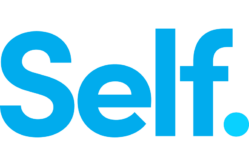Housing expenses are often the largest part of one’s budget. So it’s powerful when you can find a way to decrease your mortgage payment. On the flip side, a rising house payment can hurt a budget.
I was surprised the first time I saw our mortgage payment increase – after all, we had a fixed-rate mortgage. And fixed-rate mortgages should always have a fixed mortgage payment, right?
Well, they do. The part of your mortgage payment covering principal and interest will not change unless you have an adjustable-rate mortgage.
However, the portion of your mortgage payment that is held in escrow to cover taxes and insurance is subject to change. The escrow amounts are often based on an estimate of expected expenses, and changes in the property’s value or insurance premiums can affect the bill.
That is exactly what happened to us. We were making escrow payments for our homeowner’s insurance and property taxes, and after the first year, there was a shortfall. So we had to pay an extra $50 each month to help make up for the escrow shortfall.
We had enough room in our budget that it didn’t affect us too much. But not everyone has that kind of room in their budget. That experience got me thinking about how I could lower my mortgage payment, not only to help in times like these but to pay it off more quickly.
This article will look at the different ways you can lower your mortgage payment. The purpose of this post is to help you save money on your loan and keep more money in your bank account.
How to Lower Your Mortgage Payment
Changes in a mortgage payment are actually not uncommon in the first few years of a mortgage. If you pay your mortgage through escrow and it includes your mortgage, property taxes, and homeowners insurance, then those are the areas you want to look at to reduce your mortgage payments. Let’s take a look at them to see if any of them will work for you.
Refinance your mortgage
The most permanent solution, and often the biggest win, is to refinance your mortgage at a lower interest rate. Interest rates right now are at or near all-time lows, making this a great time to refinance your mortgage.
You will have better success refinancing your mortgage if you have 20% or more equity, and you will need a good credit score to refinance your mortgage. This is why having a high credit score is so important: reducing your interest rate by 1% can save you hundreds of dollars each month and tens of thousands of dollars over the remainder of your mortgage.
The good news is that having a mortgage can improve your credit score over time if you consistently make on-time payments, making it easier to be approved for a refinance loan.
Challenge your property taxes
Your property tax payments will change any time the county decides to raise or lower your taxes. In our situation, we remodeled our basement, and the county reassessed our home’s value at $30,000 above reasonable market value.
While I was researching the change in our mortgage payment, I discovered our county had incorrectly listed our property details. They showed our house as having an extra bedroom and more square footage than it actually had. This inflated our property taxes.
I challenged our property taxes, and our home was reassessed, saving us several hundred dollars each year. Many counties only allow you to challenge your property taxes at certain times during the year, so be sure to look into the process.
We received a refund from the county a few months after we paid our taxes, but it took a few months before the new tax rates showed up on our escrow account. Our mortgage payment was lowered to reflect that change. Next time, I will contact the escrow company myself to make sure they update their books more quickly.
Property taxes are normally adjusted by the county on a periodic basis but can also change due to the homestead exemption, veteran, disability, or other filing exemptions.
Pay less for homeowners insurance
Most lenders require home buyers to use an escrow account that includes homeowners insurance premiums. This guarantees the insurance payment is made and protects the lender’s investment in you. Insurance premiums usually don’t have extreme changes from year to year unless you make major upgrades to your property or your land is reassessed for natural disasters such as hurricanes, earthquakes, or flood plains.
This presents another way to slash your mortgage costs. All you need to do is shop around for quotes on a new homeowners insurance policy. It’s best to compare quotes from multiple companies.
Keep in mind that many insurance providers offer discounts for multiple policies, so you may be able to shop for other insurance policies at the same time and save even more money by bundling policies. Be sure to choose a deductible you can afford; otherwise, saving a few bucks can cost you more than you bargained for.
You can also lower your homeowner’s insurance rates by remaining with your current insurance provider and selecting a higher deductible, or you can shop around for lower homeowners insurance rates.
Get rid of PMI
Private mortgage insurance can add thousands of dollars to your annual mortgage payments. If you want to lower how much you’re paying every year, then you’ll need to get rid of your PMI. That additional insurance is used to protect the mortgage company from them not getting their money back.
You can generally have PMI removed from your mortgage payment when you have at least 20% equity in your home. Recent increases in housing valuations may have given you a substantial boost in equity. Check with your lender to see if you can have PMI removed from your loan.
It’s a simple and quick way to save money and keep more money in your pocket.
Recast your home loan
While most people don’t know it, there is a way that you can “reset” your loan. If you have enough money to make a large additional payment towards your mortgage, the lender will recast your loan. This can shorten the mortgage loan, saving you thousands of dollars over the course of the loan.
Throw extra money at your mortgage
Making additional principal payments can help you shorten the term of your home loan. You will not see any instant results, but you’ll slowly start chipping away at those mortgage payments. If you have extra money that you’ve been putting in your savings account or spending somewhere else, you should consider making additional payments to your mortgage loans.
This won’t directly decrease your mortgage payment, but it will reduce the number of payments you need to make and save you thousands of dollars over the duration of your home loan.
Other Ways Mortgage Payments Can Change
Mortgage payments generally remain constant – but be prepared for some fluctuation in the bill.
Any time your property taxes or insurance premiums change, you will likely see a change in your mortgage payment. If you aren’t prepared, you could be in for an ugly surprise!
Escrow Shortages
We pay our mortgage and property taxes through a mortgage escrow account. Monthly payments to escrow accounts are usually based upon 1/12 of the annual expected charges for property taxes, insurance, and anything else that may be covered. Laws also permit lenders to require additional monthly payments if the lender determines there is a deficiency in the escrow accounts.
This is what happened to us. When our property tax was unexpectedly raised, and the escrow service paid the bill, our escrow account was withdrawn under the minimum balance. Our mortgage payment was raised to cover that difference (the payment was raised 1/12 of the difference to spread the repayment out over a year).
Now that our property taxes are lower, we have sufficient money in our escrow account and no longer pay the additional charges. Escrow surpluses are required to be returned to the homeowner within 30 days of the period’s end.
Adjustable Rate Mortgages (ARM)
Some mortgages, such as ARM loans, provide for periodic adjustments to your principal and interest payment amount. Adjustable rate mortgages are not usually a good idea unless you plan on getting a low rate adjustable mortgage for a few years and either selling the house before your rates adjust upward or rolling that mortgage into a lower fixed rate before the mortgage rates change. Otherwise, you may find that your new interest rate makes your mortgage unaffordable.
Refinancing Will Save You the Most Money
Refinancing is the best option of these because it gives you immediate results (or as long as it takes to close on your new loan), and the results are typically larger and permanent if you get a fixed-rate loan.
You may or may not receive immediate results by challenging your property taxes or getting a new homeowners insurance policy. It usually takes a few months before your next tax bill goes into effect, and in the meantime, you will continue paying the old property tax rate into your escrow account.
Homeowners’ insurance policies can take effect immediately, but some escrow companies prefer to wait until the end of the year to reconcile their accounts, so in the meantime, you may continue paying the higher rate, which may result in an overage in a refund the following year. But that’s better than the alternative of an increased mortgage payment!
Saving Money on Homeowners Insurance
Another simple way to save money is by saving money on your homeowner’s insurance policy. Shopping around for homeowner’s insurance is the easiest way to find the best deal.
Each insurance company is different, and all of them have different ways of calculating insurance premiums. If you want to save money, it’s important that you compare dozens of quotes.
Another easy way to save money on your insurance plan is to raise the deductible for your plan. The higher you raise your deductible, the lower your monthly premiums are going to be for the insurance plan.
For example, increasing your deductible from $500 to $1,000 can save you around 25% in monthly premiums. Decreasing your monthly premiums will likely save you money, but be aware that if you need to make a claim on your homeowner’s plan, you’ll be required to pay more before the coverage kicks in.
Another way that you can save money is by simply installing a security system in your house. The vast majority of insurance companies will give you a discount if you have a security system that is linked to a company.
There are dozens and dozens of different home security companies on the market that you can choose from. After you have your system installed, all you have to do is contact your insurance company, and they can reassess your monthly premiums to reflect the new rates.
One way to save money is to ask your agent about any additional discounts that they may have. Some companies will give you lower premiums if you’ve updated your electrical or plumbing.
They could also have discounts if you’re over a certain age or if you live within a certain distance from a fire hydrant. By asking your insurance agent, you could save thousands and thousands of dollars every year on your insurance plan.
We know that saving money on your mortgage and insurance plans can be difficult, but that’s why we are here to help. It’s our mission to help you save as much money as possible.
Your mortgage will be one of your largest bills, but there are several simple ways to trim down your payments and save you money. If you have any questions, please contact us today. We would be happy to answer those questions.



Comments:
About the comments on this site:
These responses are not provided or commissioned by the bank advertiser. Responses have not been reviewed, approved or otherwise endorsed by the bank advertiser. It is not the bank advertiser’s responsibility to ensure all posts and/or questions are answered.
Dave Be says
My escrow payment was increased by $50/month because of an increase in my homeowners insurance (it went up by $300). I switched homeowners insurance providers and got a lower rate (it was $290 less that my previous rate). Unfortunately, my escrow rate hasn’t changed. I just change insurance providers (2months ago) so will my bank eventually lower my escrow to account for my lower homeowners insurance rate?
Ryan Guina says
Dave, most escrow companies adjust the withholding requirements annually. You will need to contact them to see if you can decrease your escrow requirement. Be prepared to provide proof of insurance, the annual insurance cost, etc. Best wishes!